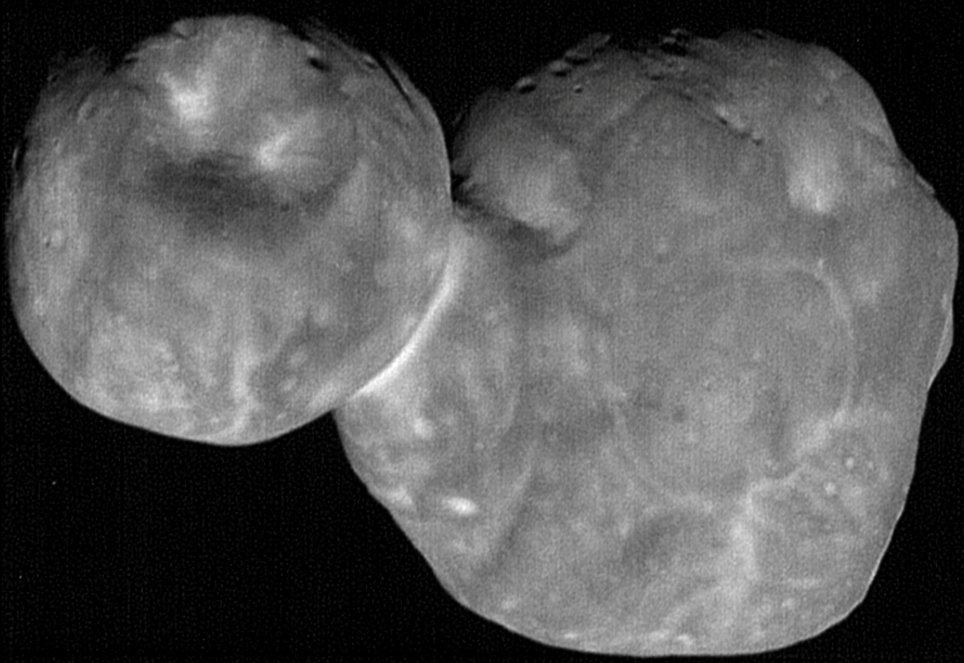Eddie Gonzales Jr. – MessageToEagle.com – NASA’s New Horizons spacecraft captured the sharpest possible pictures of the Kuiper Belt object nicknamed Ultima Thule – the farthest object ever explored.
The pictures were obtained just before New Horizons’ closest approach to the object (officially named 2014 MU69) at 12:33 a.m. EST on Jan. 1, 2019 – offer a resolution of about 110 feet (33 meters) per pixel.

These new images of Ultima Thule were obtained by the telephoto Long-Range Reconnaissance Imager (LORRI), according to a press release.
Their combination of high spatial resolution and a favorable viewing angle gives the team an unprecedented opportunity to investigate the surface, as well as the origin and evolution, of Ultima Thule, which is thought to be the most primitive object ever encountered by a spacecraft.
“Getting these images required us to know precisely where both tiny Ultima and New Horizons were — moment by moment – as they passed one another at over 32,000 miles per hour in the dim light of the Kuiper Belt, a billion miles beyond Pluto,” said said New Horizons Principal Investigator Alan Stern.
“This was a much tougher observation than anything we had attempted in our 2015 Pluto flyby.”
The higher resolution brings out a many surface features that weren’t readily apparent in earlier images. Among them are several bright, enigmatic, roughly circular patches of terrain. In addition, many small, dark pits near the terminator (the boundary between the sunlit and dark sides of the body) are better resolved.
“Whether these features are craters produced by impactors, sublimation pits, collapse pits, or something entirely different, is being debated in our science team,” said John Spencer, deputy project scientist from SwRI.
Ultima is a smaller object than Pluto, but the Ultima flyby was done with the highest navigation precision ever achieved by any spacecraft before.
This unprecedented precision was achieved thanks to the ground-based occultation campaigns from 2017 and 2018 conducted in Argentina, Senegal, South Africa and Colombia, as well as the European Space Agency’s Gaia mission, which provided the locations of the stars that were used during the occultation campaigns.
Written by Eddie Gonzales Jr. – MessageToEagle.com Staff Writer






